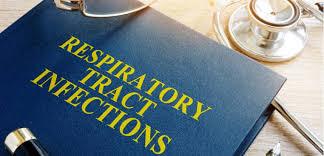Patrocinados
Respiratory Tract Infections: Causes, Symptoms & Effective Treatments

Respiratory tract infections are among the most common illnesses affecting people worldwide. These infections target the airways — from the nose and throat down to the lungs — and can range from mild colds to severe pneumonia. While some cases resolve on their own with rest and care, others require timely medical attention to prevent complications. Understanding the causes, symptoms, and treatment options is key to staying healthy and protecting those around you.
What Are Respiratory Tract Infections?
Respiratory tract infections (RTIs) are illnesses that affect the parts of your body involved in breathing. This includes your sinuses, throat, airways, and lungs. They are generally divided into two main categories: upper respiratory tract infections (URTIs) and lower respiratory tract infections (LRTIs).
- Upper RTIs typically affect the nose, sinuses, and throat. Common examples include the common cold, sinusitis, pharyngitis (sore throat), and laryngitis.
- Lower RTIs affect the lungs and airways. These include bronchitis, bronchiolitis, and pneumonia, which can be more serious and may need medical treatment.
These infections are often caused by viruses, but bacteria, fungi, or other microorganisms can also play a role. Depending on the cause and severity, symptoms can range from mild discomfort to breathing difficulties.
Types of Respiratory Tract Infections
Understanding the types of respiratory tract infections helps in early recognition and proper treatment. Although these infections share many symptoms, their severity and treatment approaches can differ significantly.
- Common Cold: Usually caused by viruses like rhinoviruses or coronaviruses. It affects the upper airways and leads to symptoms like a runny nose, sneezing, and mild fever.
- Sinusitis: Inflammation or infection of the sinuses, often following a cold. It can cause facial pain, congestion, and headaches.
- Pharyngitis (Sore Throat): Infection of the throat, commonly viral but sometimes bacterial (like strep throat).
- Laryngitis: Inflammation of the voice box (larynx), often causing hoarseness or loss of voice.
- Bronchitis: A lower respiratory infection involving inflammation of the bronchial tubes. It often causes persistent coughing and chest discomfort.
- Pneumonia: A serious lower respiratory infection affecting the lungs. It may be caused by bacteria, viruses, or fungi, leading to breathing difficulty, high fever, and fatigue.
- Bronchiolitis: Common in infants and young children, often caused by respiratory syncytial virus (RSV). It affects the smaller airways in the lungs.
These conditions can overlap, and what starts as a mild cold may progress to a more serious infection, especially in vulnerable individuals like children, older adults, or those with weakened immune systems.
Causes of Respiratory Tract Infections
Respiratory tract infections develop when harmful microorganisms invade the respiratory system. The most common causes include viruses, bacteria, and, less frequently, fungi.
- Viral Infections: The majority of RTIs are viral. Viruses like influenza, rhinovirus, respiratory syncytial virus (RSV), and coronaviruses are major culprits. They spread easily through respiratory droplets when an infected person coughs, sneezes, or talks.
- Bacterial Infections: Bacteria like Streptococcus pneumoniae and Haemophilus influenzae can cause serious infections such as pneumonia, bronchitis, or strep throat.
- Fungal Infections: Though less common, fungi can infect people with weakened immune systems, leading to serious lung infections.
- Environmental Factors: Pollution, smoke, and exposure to allergens can irritate the respiratory tract, making it easier for infections to develop.
- Weakened Immune System: People with chronic illnesses, autoimmune disorders, or poor immunity are more vulnerable to respiratory infections.
Transmission typically happens through droplets in the air, contaminated surfaces, or direct person-to-person contact.
Symptoms of Respiratory Tract Infections
The symptoms of respiratory tract infections depend on the specific type of infection and whether it affects the upper or lower respiratory tract. However, several common signs may appear in most cases.
- Runny or Stuffy Nose: A classic symptom of upper respiratory infections like the common cold.
- Sore Throat: Often caused by irritation and inflammation due to infection.
- Cough: Can be dry or productive (with mucus), depending on the type of infection.
- Fever: A sign that your body is fighting off the infection.
- Sneezing and Congestion: Typical in viral infections like colds and flu.
- Shortness of Breath: More common in lower RTIs like bronchitis or pneumonia.
- Fatigue and Weakness: A natural response of the body to infection.
- Wheezing or Chest Tightness: Often seen in bronchitis or other lung infections.
If symptoms persist for more than a few days, worsen, or are accompanied by breathing difficulties, it’s crucial to seek medical help.
Diagnosis of Respiratory Tract Infections
A proper diagnosis ensures effective treatment and prevents complications. Doctors use a combination of physical examination, medical history, and diagnostic tests to identify the cause and severity of the infection.
- Physical Examination: Doctors check your throat, lungs, temperature, and breathing pattern.
- Swab Tests: A throat or nasal swab can identify specific viruses or bacteria.
- Blood Tests: Help detect signs of infection or inflammation in the body.
- Chest X-rays: Useful for diagnosing pneumonia or bronchitis.
- Pulse Oximetry: Measures oxygen levels in the blood to assess lung function.
- Sputum Tests: Analyze mucus to identify bacterial infections.
Early diagnosis not only helps in managing symptoms effectively but also reduces the risk of spreading the infection to others.
Effective Treatment Options for Respiratory Tract Infections
Treatment depends on whether the infection is viral, bacterial, or fungal. Since most respiratory tract infections are viral, antibiotics are not always necessary.
- Viral Infections: Usually treated with rest, fluids, and over-the-counter medications to ease symptoms. Antiviral drugs may be prescribed in some cases, like the flu.
- Bacterial Infections: Treated with antibiotics as prescribed by the doctor. It’s important not to self-medicate or misuse antibiotics.
- Fungal Infections: Managed with antifungal medications in severe or chronic cases.
- Supportive Care: Includes staying hydrated, using a humidifier, and taking fever-reducing medicines if needed.
If you experience persistent cough, high fever, or difficulty breathing, don’t ignore these signs. 👉 Book an appointment with the best General Physician through InstaCare to get a proper diagnosis and personalized treatment plan. Early medical attention can make a huge difference in your recovery.
Prevention of Respiratory Tract Infections
Prevention plays a vital role in reducing the spread of respiratory infections. By adopting healthy habits and making simple lifestyle changes, you can protect yourself and those around you.
- Wash your hands frequently with soap and water.
- Use hand sanitizer when soap isn’t available.
- Cover your mouth and nose when coughing or sneezing.
- Wear a mask in crowded or enclosed spaces, especially during flu season.
- Avoid close contact with people who are sick.
- Keep your surroundings clean and well-ventilated.
- Get vaccinated against flu, pneumonia, and other respiratory infections.
- Strengthen your immune system through a balanced diet, regular exercise, and sufficient sleep.
These small but powerful steps can significantly reduce your risk of falling sick.
When to See a Doctor
Not all respiratory infections need medical treatment, but certain warning signs should never be ignored. Seek medical help immediately if you experience:
- High fever that doesn’t subside
- Difficulty breathing or shortness of breath
- Chest pain or pressure
- Persistent cough lasting more than two weeks
- Blood in sputum
- Severe fatigue or confusion
These may indicate a more serious infection like pneumonia or bronchitis that requires medical attention and possibly hospitalization.
Conclusion
Respiratory tract infections are common but can become serious if not managed properly. Most mild cases can be treated at home with rest, hydration, and good care. However, if symptoms worsen or breathing becomes difficult, timely medical help is crucial. Preventive measures like proper hygiene, wearing masks, and getting vaccinated are some of the simplest yet most effective ways to protect yourself.
👉 Don’t take chances with your respiratory health. Book an appointment with a qualified General Physician through InstaCare for professional medical support and peace of mind.
Frequently Asked Questions (FAQs)
1. How long does a respiratory tract infection usually last?
Most mild respiratory infections, like the common cold, last about 7 to 10 days. However, more severe infections such as bronchitis or pneumonia can take several weeks to fully recover. The exact duration depends on the cause, your immunity, and how early you seek treatment.
2. Are respiratory tract infections contagious?
Yes, most respiratory tract infections are contagious, especially viral ones. They can spread through droplets in the air when an infected person coughs or sneezes. Practicing good hygiene and wearing a mask can help prevent transmission.
3. Can antibiotics treat all respiratory infections?
No. Antibiotics only work against bacterial infections, not viral ones like colds or flu. Misusing antibiotics can lead to resistance, making future infections harder to treat. Always consult a doctor for proper diagnosis and treatment.






